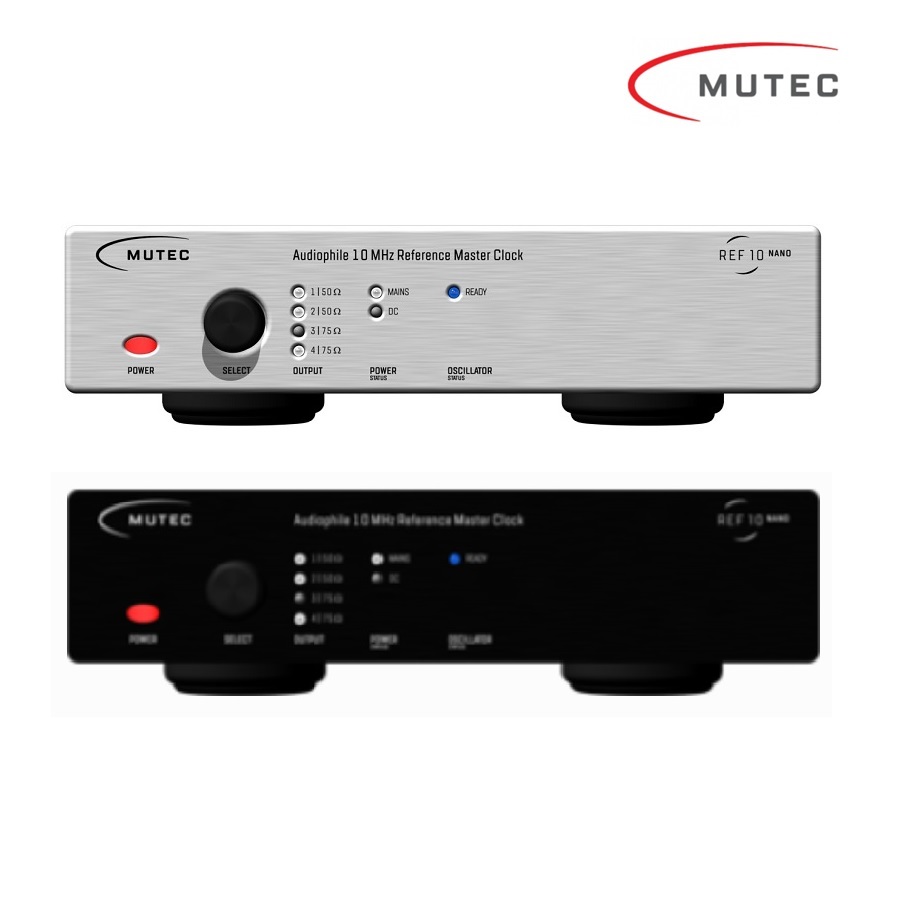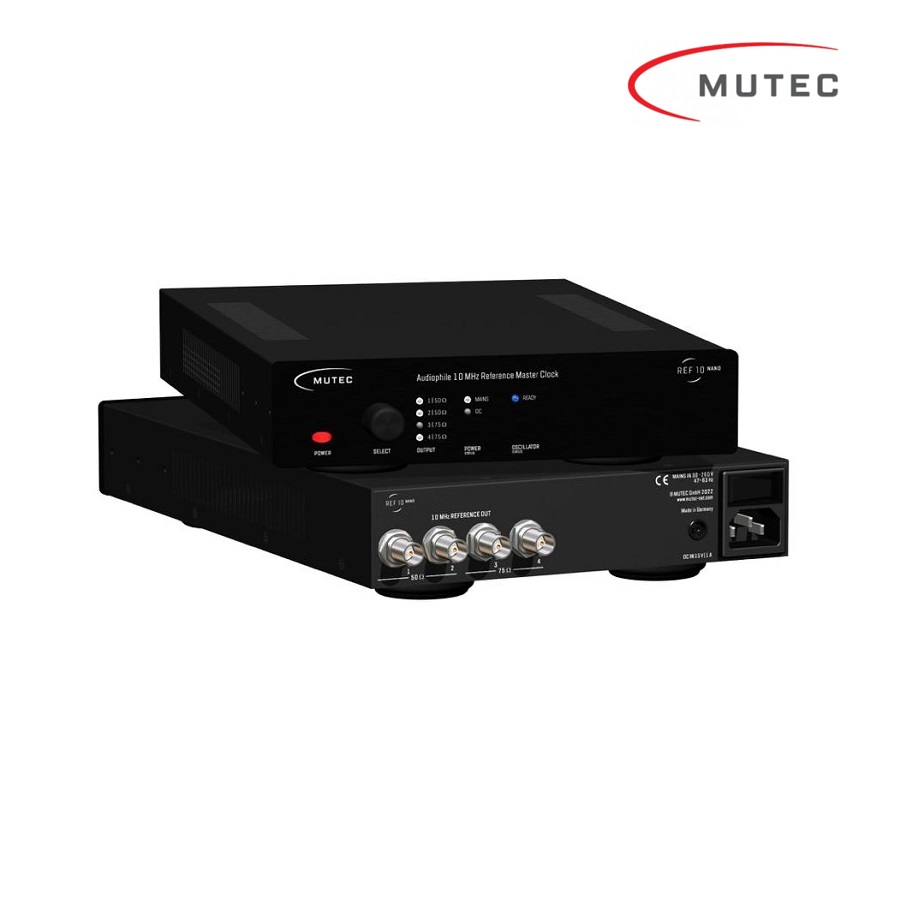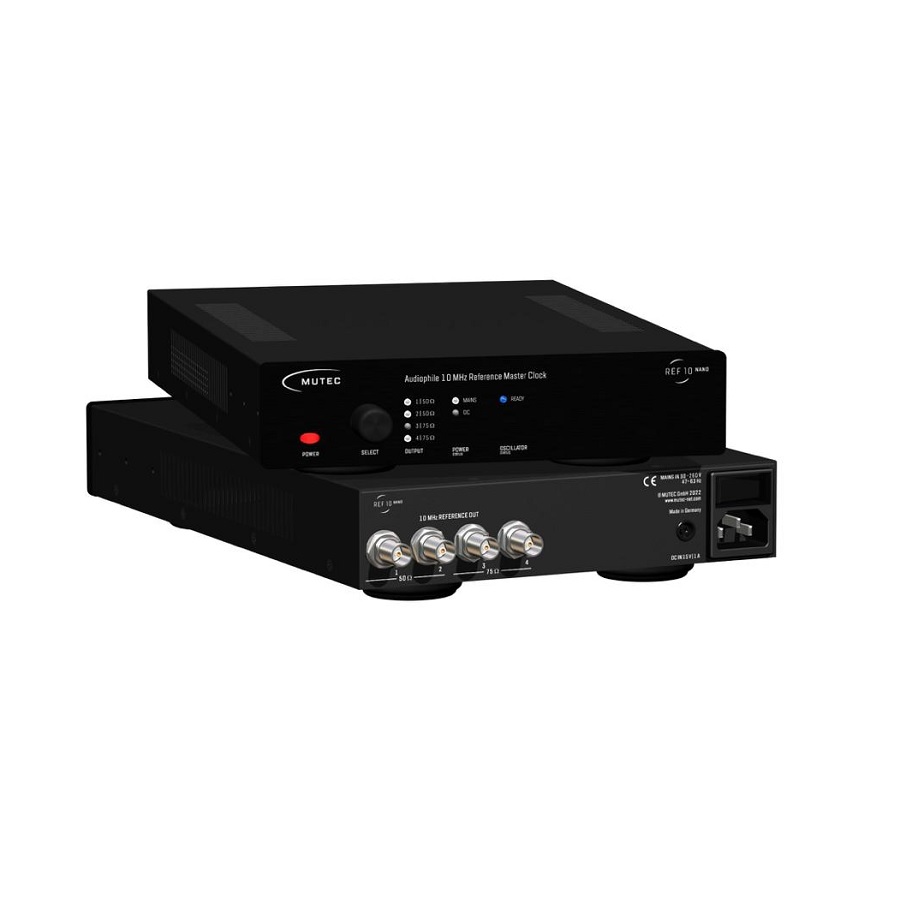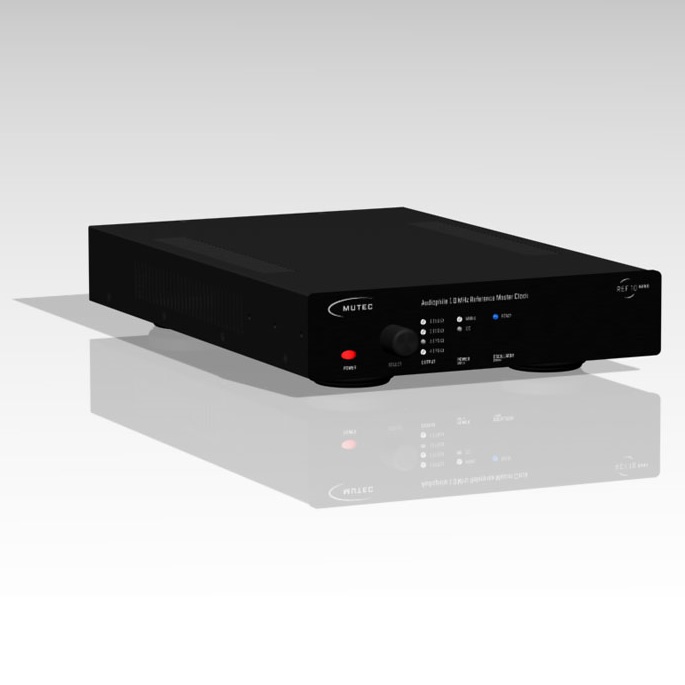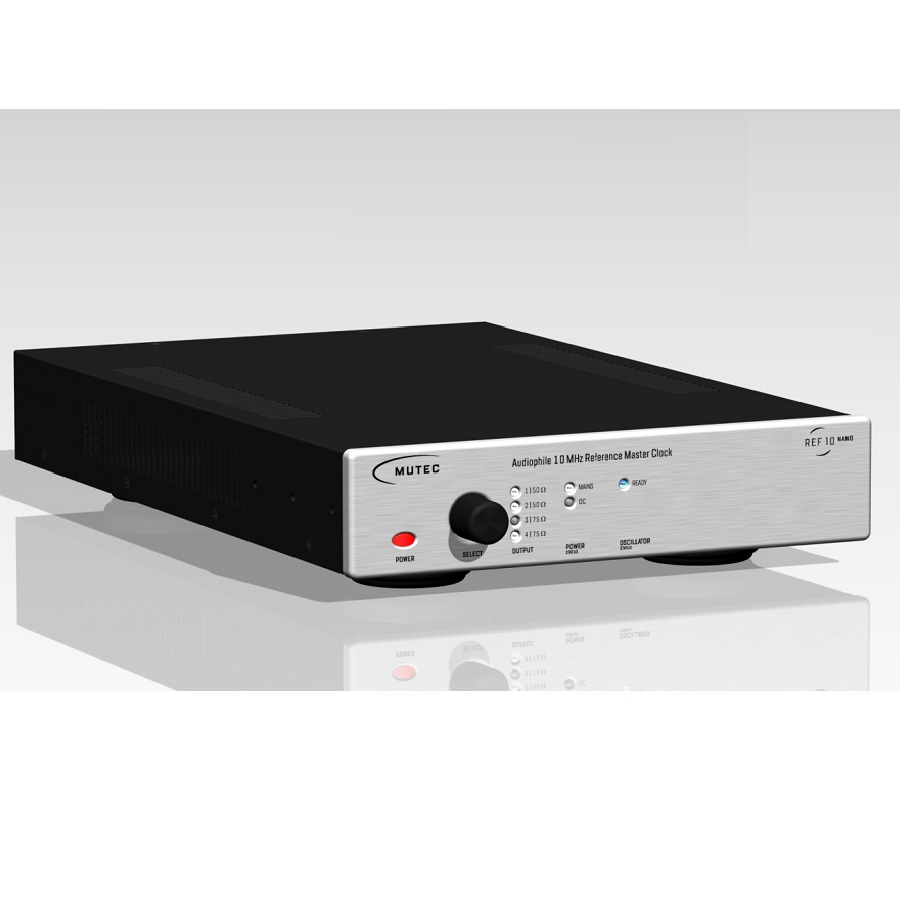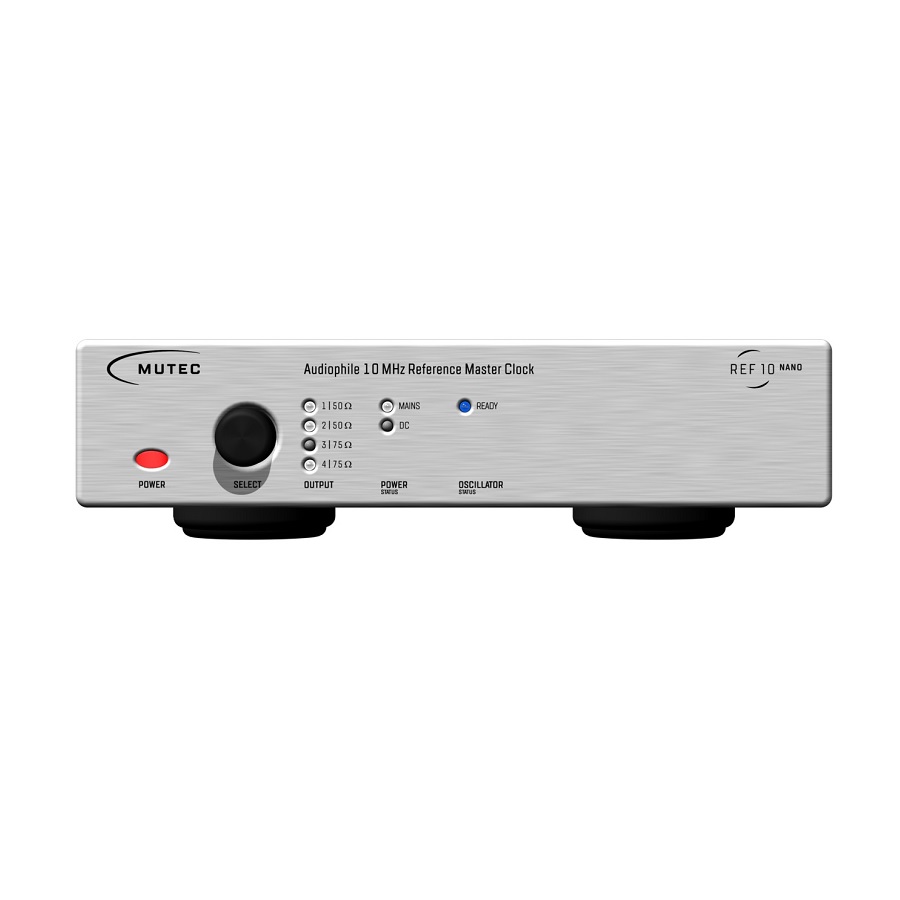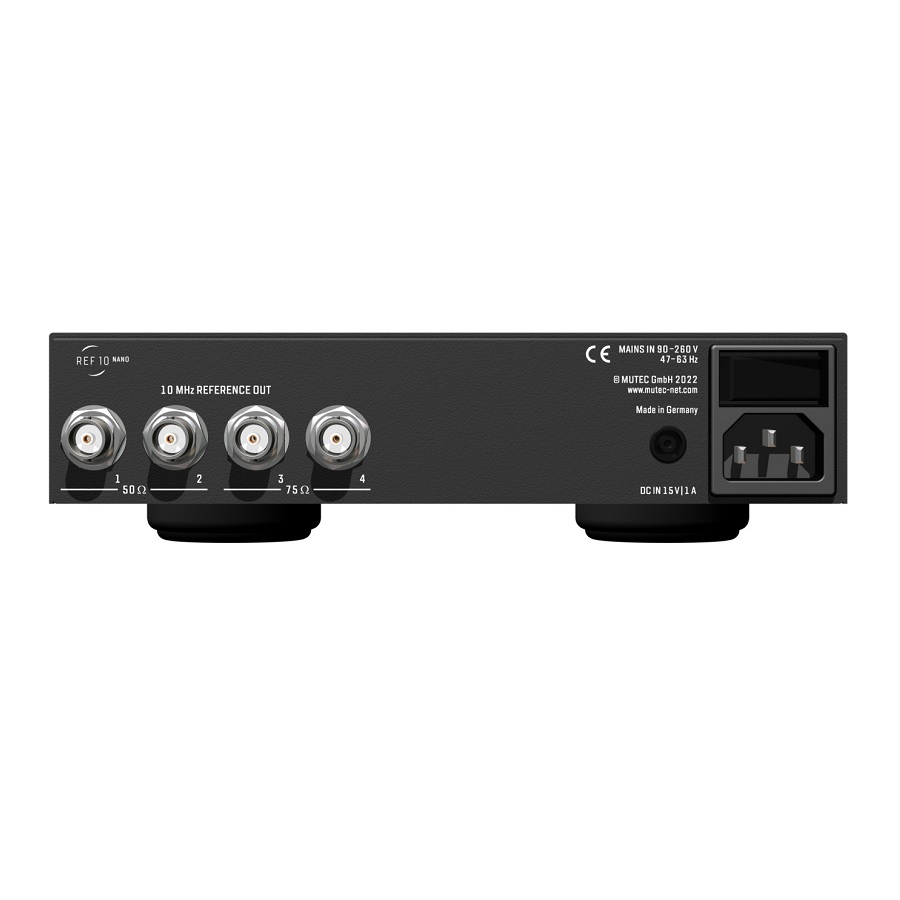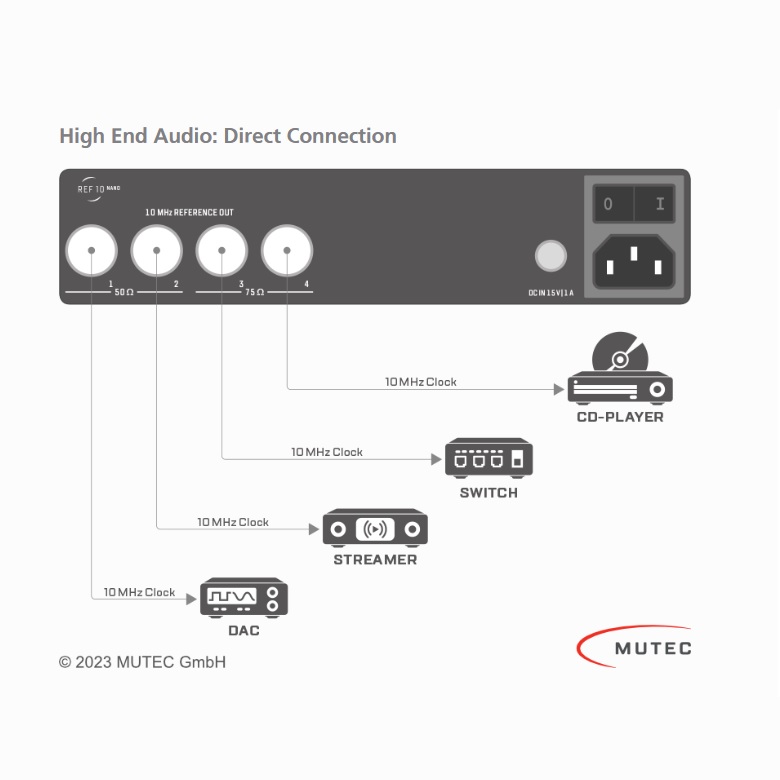Product Features:
Advantage OCXO
Highly important for the performance of a reference master clock is the frequency stability of the oscillator used. This parameter is dependent, among other things, on its ambient temperature, which must remain within a precisely defined range. If this very narrowly defined frame is deviated from by a variation in the ambient temperature, the frequency stability of the oscillator is affected. This has a significant impact on the precision of the digital signal processing for connected audio devices. The German-made OCXO (Oven Controlled Quartz Oscillator) used in the REF10 NANO is permanently kept at the same ideal temperature in its dedicated heated enclosure. This sophisticated method is the best way to achieve excellent results, as it provides exceptional frequency stability. Traditional temperature-compensating quartz oscillators (TCXO) constantly readjust the deviations of the changing temperature conditions on the basis of continuos measurements. But they fall far short of the quality level of an oven-based solution. Conventional low-cost crystal oscillators without any temperature control used to ensure the timely processing of the digital data flow in common DA converters, switches, streamers and re-clockers, lack even more of the frequency stability, which is extremely relevant for uncompromising high-quality audio reproduction. Therefore, the use of an excellent OCXO is largely responsible for the outstanding quality of MUTEC's REF10 NANO.
OCXO versus Atomic Clock (Rubidium/Cesium)
As an alternative to an OCXO, so-called atomic clocks are also used in advanced reference clock generators, mostly based on rubidium or cesium references. We do not think this is the way to go. Our researches have shown that the high clock stability of atomic clocks occurs in a time range that is inappropriate, therefore of no relevance for digital audio applications. Their long-term stability refers to the amount by which the absolute clock frequency drifts over a longer period of time, from a few days to several years. Although long-term stability is important for telecommunication applications, for example, it has no impact to reproduction of digital audio material. The crucial factor for sound quality is the accuracy of the time interval from one sample to the next sample, i.e. a very short time range, usually measured in time intervals between 0.01 sec. and a few seconds. Alterations of this so-called short-term stability are measured as jitter or phase noise. At this crucial point for audiophile music reproduction the OCXO-based REF10 NANO delivers the significant advantage over rubidium or cesium-based clock references.
The Power Issue
The power supply plays a significant role for the overall quality of signal processing. Due to that, the MUTEC developers have put increased effort into this area as well. Here, the oven-controlled oscillator in particular gets its ultra-low noise supply voltage completely isolated from the rest of the circuitry. In addition, sub-Hz optimized, lowest noise voltage sources supply each single part of the circuitry individually in order to avoid any mutual interferences. The extremely low noise clock distribution and amplification circuitries ensure that the OCXO's reference clock signal reaches the four outputs of the REF10 NANO with virtually no loss. For performance tuning the internal power supply can be bypassed with an externally applied 16 volt power supply. The dedicated DC input on the back of the compact 10 MHz reference master clock provides a convenient and safe way to optimize in this regard.
Based on Mutec's knowledge of the importance of a clock signal’s rise time (steepness of the edge) for the audio performance, Mutec chose a very high slew-rate, lowest ripple square wave signal for the REF10 NANO. In contrast to the low slew-rate sine wave signals used by competing brands, this leads to superior lock precision and therefor minimized jitter at the receiving end. As a result, all devices connected to the REF10 NANO will sound even better.
Targeted Design
In order to remove jitter and phase noise from clock signals to the maximum extent possible, further manifold steps were taken. The REF10 NANO has an enclosure made of steel to protect the electronics from high frequency interferences. Compared to commonly used aluminum cases, the insulation against external interferences is considerably better. To avoid hum caused by ground loops, all output stages of the REF10 NANO are galvanically isolated. Each of the four clock outputs can be switched on and off individually so that only the required outputs are active. This helps to minimize mutual interferences in the high frequency range as best as possible. There are two pairs of outputs, each with a different termination of 50 ohms and 75 ohms. This ensures successful interaction of the REF10 NANO with a wide range of devices of other manufacturers. Operation couldn't be simpler: all you have to do is select the desired output and the NANO immediately works it`s magic.
Clear Sound Improvement
Using a reference master clock such as the affordable REF10 NANO can significantly improve the sound of a digital audio setup. This applies to the audiophile listener at home as well as to the mastering/recording engineer in a professional A/V studio environment. In every use case, there is a clear increase in audio quality. Including the REF10 NANO in your system results in higher transparency, more clearly defined bass, darker background, better instrument staging and extended imaging. The MUTEC REF10 NANO certainly takes the audio quality of compatible D/A converters, network switches, servers, streamers, CD players, clock generators and re-clockers to a new level. It is likewise the perfect upgrade for owners of an MC3+/MC3+ USB interface. In every context, the REF10 NANO 10 MHz reference master clock makes a significant contribution to fulfilling the central MUTEC promise: Perfecting Digital Audio.

